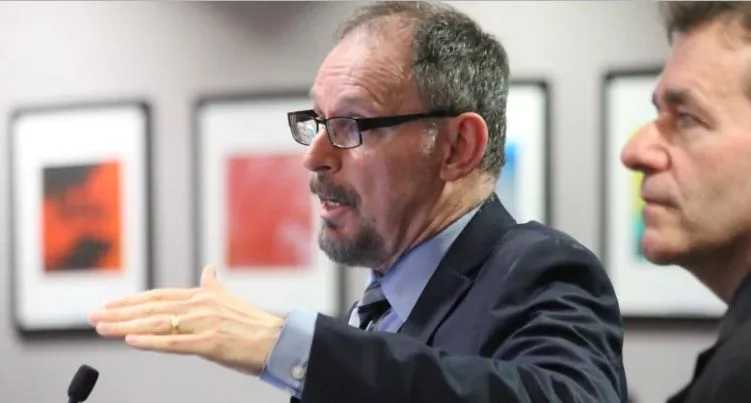Emelko co-leads forWater, a Canada-wide and internationally-partnered strategic research network focused on forest management-based approaches for drinking water source protection. The network brings together researchers, government agencies and industry professionals from different disciplines across Canada who are focused on understanding and developing response strategies to climate change threats.
Could Toronto make drinking fountains accessible year-round? This engineering grad says yes
A group of engineering students says it's found a way to make drinking fountains available year-round in Toronto, and is calling on the city to pour out the funds to make that vision a reality. The solution sprang from a University of Toronto class project on technology for global development, where five students were tasked with finding a way to make drinking fountains operational throughout the year.
WTTW News Explains: What Happens After You Flush?
Every time you flush, the waste disappears in a swirly whirl, never to be seen again. It’s magic! Actually, it’s science and engineering. And the flush is just the start. Let’s follow that flush! First stop: The sewer pipe. This is where your business mingles with all the other household wastewater. You know, the scummy stuff that gets rinsed off your dishes and clothes and body. In older cities like Chicago, stormwater and runoff joins the party, too. That’s because Chicago has what’s called a combined sewer system.
'This is impacting our land': Mahone Bay residents take town to court over solar project
A group of residents in Mahone Bay, N.S., say they were blindsided by the location of a new solar garden, and now they're taking the town to court for allegedly failing to consult the public on the project. Heidi Walsh-Sampson said she found out the solar garden would be built on town-owned land beside the sewage treatment plant and adjacent to her home on Main Street when she heard a heavy machine outside her window in January.
Engineering Panel Explores Solutions for Indigenous Communities Struggling to Access Clean Water
Clean, safe water is critical to human health, food production and more, yet access to this cherished resource remains a challenge for many Indigenous communities in Canada. Water advisories continue to be a common occurrence for these communities and an all-too-regular reminder of the different standards that exist in the country for public infrastructure. “More often than not, boil-water advisories are put on due to a lack of confidence in the system. Frequently, short-term ones are because there was a break in the line, the line depressurized and some contaminates may have been introduced into the distribution system,” explains Ryan Dunbar, president of SOAR Professional Services, a consulting firm focused on Indigenous employment and community development. The company was launched as a limited partnership with Dillon Consulting Limited.
$10 million solution for Verner’s brown water problem
There’s hope at the end of a long water pipe for Verner residents who have endured ‘brown water’ issues for decades. The culprit is high levels of manganese, a naturally occurring mineral in the Veuve River. And it’s been a problem ever since the water plant was built in the 1970s. On Tuesday, West Nipissing council received a report that recommends connecting the community of 1,100 people to municipal water services as the best solution.
Torry: Time to fix water infrastructure in Indigenous communities
In response to the COVID-19 pandemic, the federal and provincial governments across Canada are looking for ways to manage any economic hardship. Part of their assorted strategies has been to build new, or repair, existing infrastructure. The federal government now has an opportunity to stimulate the economy, while correcting a heinous historical injustice. It’s time to build the required infrastructure to provide all Indigenous communities in Canada with clean drinking water and reliable sewer systems.
Moncton lays groundwork to deal with cyanobacteria in water supply
Moncton plans to spend $6 million this winter to upgrade its water treatment plant, the first phase of a plan to deal with cyanobacteria in the municipal water supply. Cyanobacteria was found in 2017 in the Turtle Creek watershed, the drinking water source for Moncton, Dieppe and Riverview. Cyanobacteria, also known as blue-green algae, can form blooms and produce toxins harmful to humans and animals. The water remains safe to drink and the multimillion dollar upgrades are meant to keep it that way.
UBC researchers develop inexpensive tool to test drinking water
A handheld ‘tricorder’ that can test for biological contamination in real-time has been the dream of science fiction fans for decades. And UBC Okanagan engineers say the technology is closer to science fact than ever before. Using a small and inexpensive biosensor, researchers in the School of Engineering have developed a novel low-cost technique that quickly and accurately detects cryptosporidium contamination in water samples.










